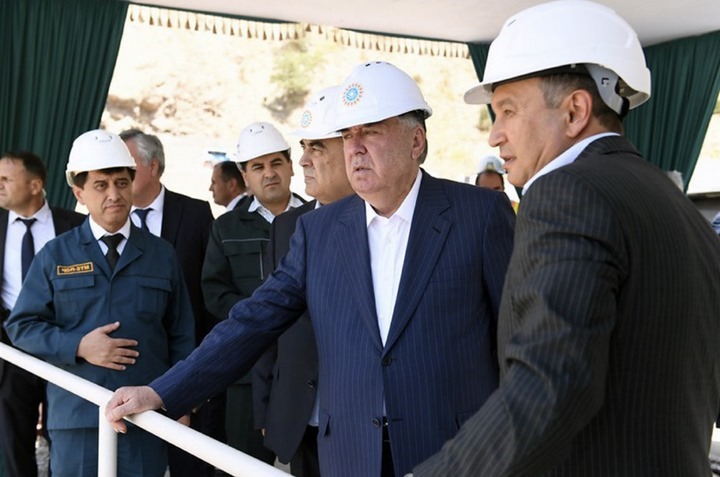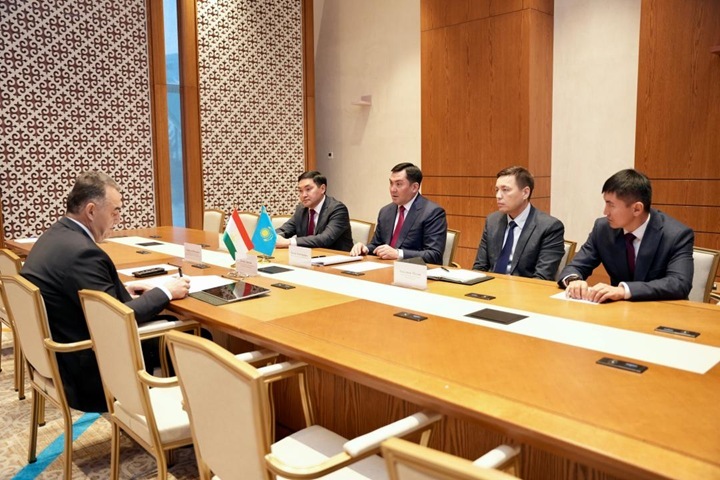Tajikistan’s Energy Minister, Daler Juma, revealed at a press conference, on February 1, that an annual allocation of approximately $1 bn is directed towards financing the construction of the Rogun hydroelectric power station. The project, touted as a key infrastructure initiative, is estimated to require a total of $6.2 bn for its completion, according to assessments by international consultants, ASIA-Plus reported.

Financing and Negotiations
Juma emphasized that negotiations with over 10 development partners are currently underway to secure the necessary funding for the Rogun hydroelectric power station. The minister expressed confidence in the $6.2 bn figure, deeming it the final amount required to bring the ambitious project to fruition. He further disclosed that announcements regarding the outcomes of negotiations with some partners are expected this month, while others will be disclosed in June.
President’s Commitment and Funding Sources
Tajikistan’s President, Emomali Rahmon, has been steadfast in his commitment to the Rogun project. In his address to the country’s parliament in December 2023, Rahmon announced plans to commission the third hydroelectric unit by 2025. Funding for the project in 2023 amounted to 5 bn somoni ( approximately $458 mn). Notably, the construction of Rogun has, thus far, relied on government funds.
Potential Investors and Financial Institutions
To diversify funding sources, Tajikistan is exploring partnerships with international financial institutions. Potential investors include the World Bank, the European Investment Bank, the Asian Development Bank, the Eurasian Development Bank, and others. Agreements have already been reached with the Asian Infrastructure Investment Bank for a $500 mn preferential loan, and the Saudi Development Fund for a $100 mn loan.
Project Evolution and Budgetary Allocations
The Rogun hydroelectric power station’s estimated cost has evolved over the years. Initially pegged at $3 bn in 2008, it increased to $3.9 bn in 2016 and, more recently, rose to $5 bn in mid-2022. Since restoration and construction work began in 2008, the Tajik government has allocated over 35 bn somoni (approximately $3.2 bn) from the state budget for the project.
Rogun Hydroelectric Power Station: A Central Asian Powerhouse
Upon completion, the Rogun hydroelectric power station is poised to be the largest in Central Asia, boasting an installed capacity of 3,600 MW. The annual electricity generation is projected to range from 13 to 17 bn kilowatt-hours, constituting a significant portion of Tajikistan’s total annual electricity output. The station will feature six turbine units, each with a capacity of 600 MW, with the final unit slated for launch in 2029. The construction is divided into four lots, with the entire project scheduled for completion by 2033.
Roghun HPP concerns
On January 24, concerns were raised by environmentalists and human rights activists regarding the potential environmental and social repercussions of the Rogun hydroelectric power station project on the Vakhsh River within the Amu Darya basin. Rivers without Boundaries, an international environmental coalition, is urging major international development banks, contemplating financial backing for the initiative, to facilitate public discussions on the updated environmental assessment. Collaborating with other environmental and human rights groups in Central Asia, the coalition is advocating for inclusive dialogues not only within Tajikistan but also in Uzbekistan, Kyrgyzstan, and Kazakhstan. They stress the significance of engaging all relevant public and scientific organizations to ensure a thorough evaluation of proposals, comments, and identified deficiencies in the revised project.






Leave a Reply